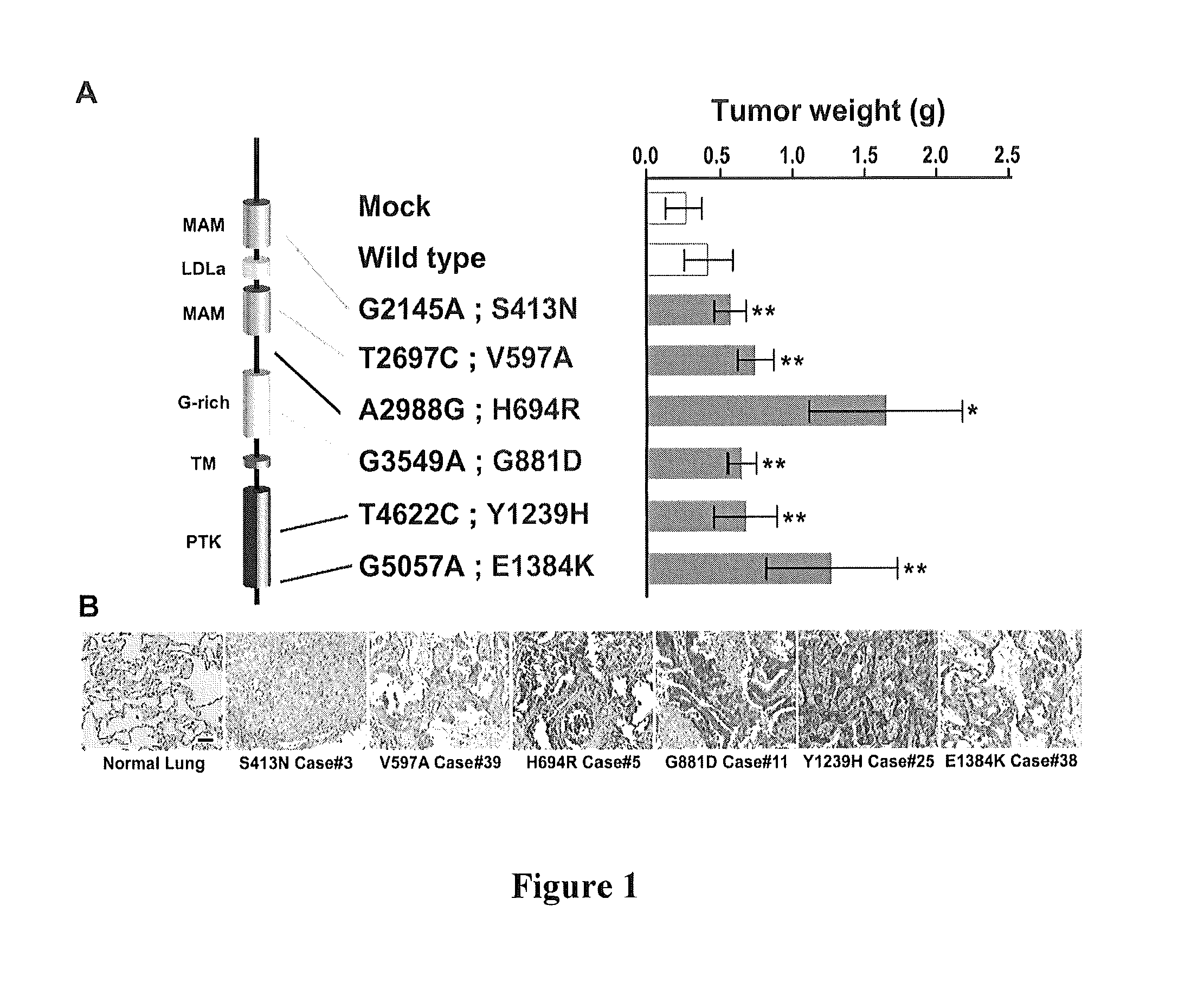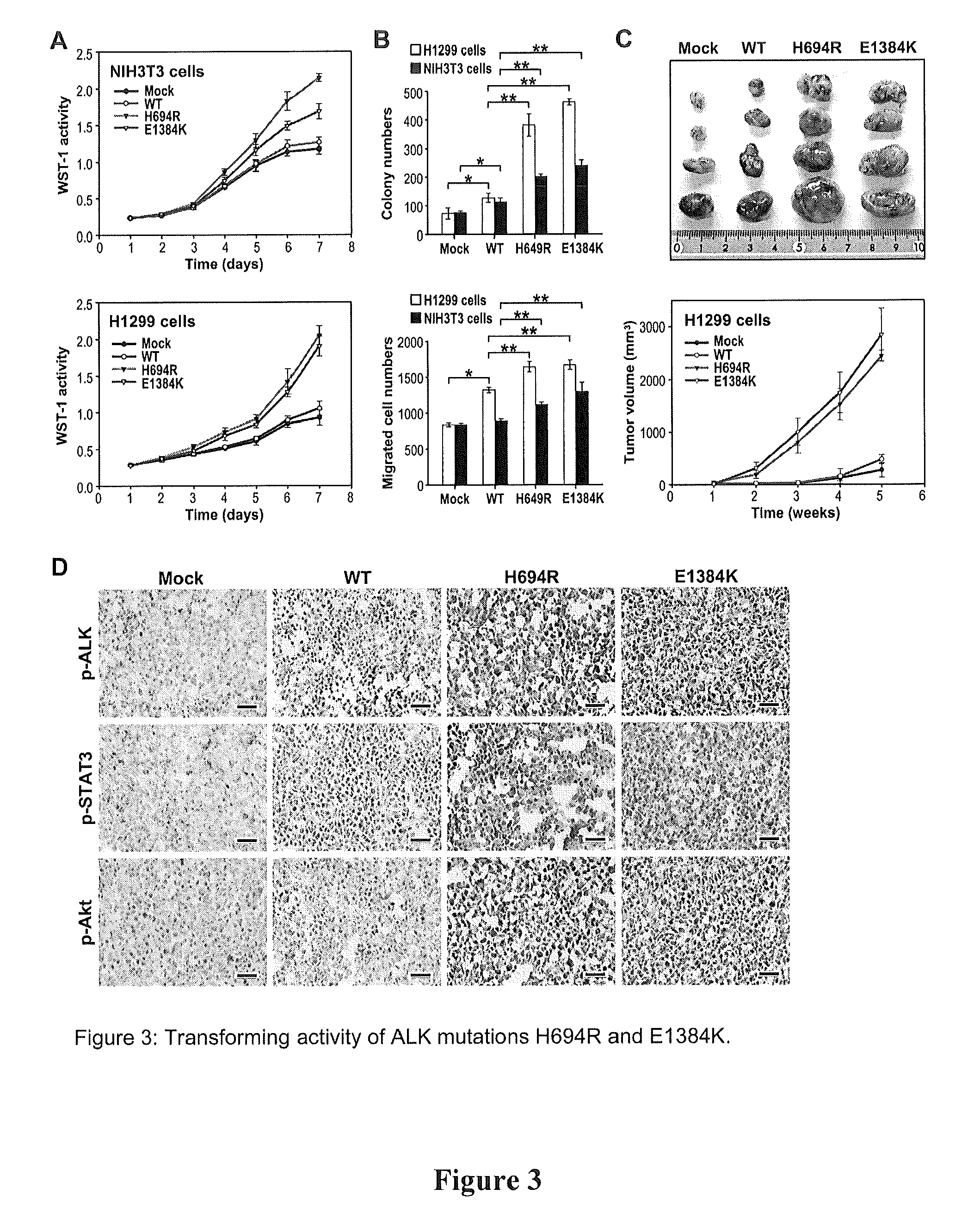Phosphorylation and mutations of anaplastic lymphoma kinase as a diagnostic and therapeutic target in lung cancer
a technology of anaplastic lymphoma kinase and mutations, which is applied in the field of diagnosis of lung cancer, can solve the problems of the controversial prognostic impact of lung cancer, and achieve the effects of improving the poor survival rate of lung cancer, increasing the expression of phosphorylated-y1604-alk, and convenient and efficient detection of lung cancer
- Summary
- Abstract
- Description
- Claims
- Application Information
AI Technical Summary
Benefits of technology
Problems solved by technology
Method used
Image
Examples
Embodiment Construction
Introduction
[0010]Lung cancer, the leading cause of cancer mortality worldwide resulted in 1.3 million deaths annually, can be broadly classified to non-small cell lung cancers (NSCLC) and small cell lung cancers (SCLC) which accounts for 85% and 15% cases, respectively1. Among NSCLC, the number of patients developing adenocarcinoma constituted for more than 40% of lung cancer patients is increasing in recent decades and replaces squamous cell carcinoma to become the major subtype of lung cancer2. Recent advances of molecular genetic studies in lung adenocarcinoma revealed many genes with somatic alterations including p53, K-ras, EGFR, HER2, c-MET, LKB1, PIK3CA, and BRAF that triggered selective advantages of cancer cells to promote tumor growth, apoptotic resistance, angiogenesis and metastasis. Depending on tumor subtype, ethnicity, smoking status and gender, EGFR mutations (3-4. EGFR mutations are important predicative factors for successful response to small molecule EGFR tyrosi...
PUM
| Property | Measurement | Unit |
|---|---|---|
| volumes | aaaaa | aaaaa |
| volume | aaaaa | aaaaa |
| apoptotic resistance | aaaaa | aaaaa |
Abstract
Description
Claims
Application Information
 Login to View More
Login to View More - R&D
- Intellectual Property
- Life Sciences
- Materials
- Tech Scout
- Unparalleled Data Quality
- Higher Quality Content
- 60% Fewer Hallucinations
Browse by: Latest US Patents, China's latest patents, Technical Efficacy Thesaurus, Application Domain, Technology Topic, Popular Technical Reports.
© 2025 PatSnap. All rights reserved.Legal|Privacy policy|Modern Slavery Act Transparency Statement|Sitemap|About US| Contact US: help@patsnap.com



